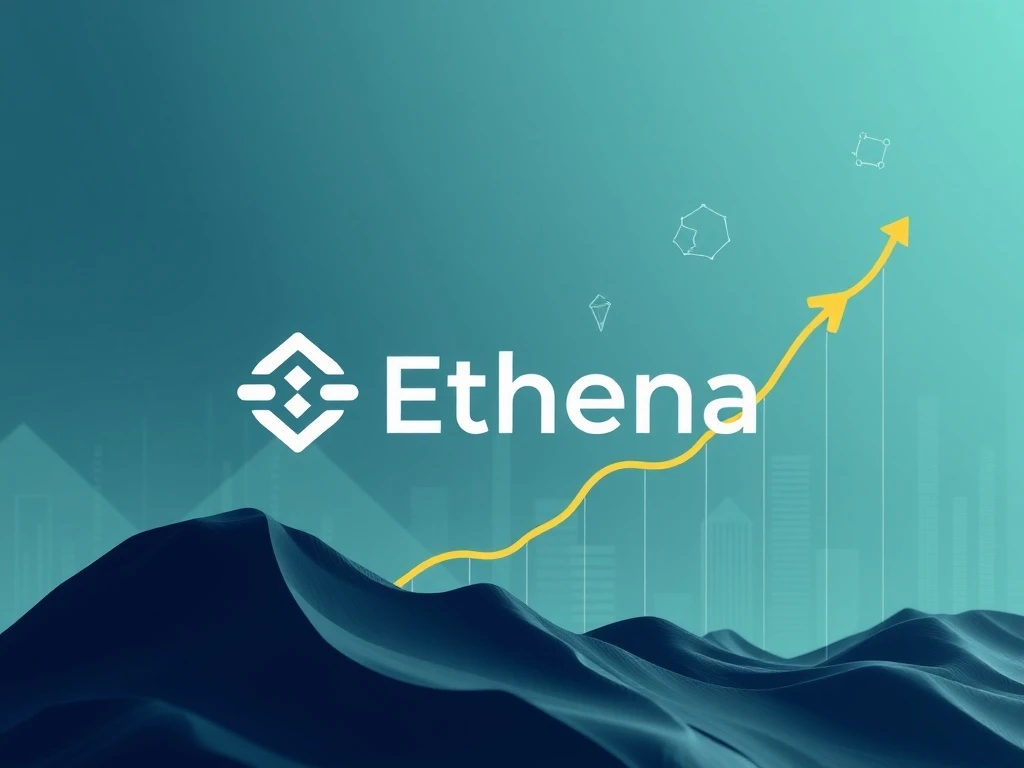Ethena: Mega Matrix Unlocks Strategic Crypto Investment in ENA Ecosystem

In a bold move reshaping the digital asset landscape, Mega Matrix (MPU) has placed a significant bet on the Ethena ecosystem. This strategic pivot positions the public holding company as the first public proxy for the rapidly evolving synthetic dollar project. As stablecoin regulation intensifies, this aggressive crypto investment strategy aims to capture substantial market share from established players like Circle.
Mega Matrix Forges Ahead with Ethena Bet
Publicly traded Mega Matrix (MPU) has declared the Ethena stablecoin ecosystem central to its digital asset strategy. The company firmly believes this synthetic dollar project can significantly challenge incumbents like Circle. This strategic decision comes at a pivotal time. The US GENIUS Act, a comprehensive stablecoin bill, is poised to establish federal oversight for issuers. It sets clear capital and liquidity requirements. Furthermore, it creates a framework for banks and fintechs to issue dollar-pegged tokens under regulatory supervision. Consequently, the stablecoin market is entering a new era of compliance and opportunity.
Currently, Circle stands as the sole publicly traded option for investors to capitalize on the enormous growth of stablecoins. Colin Butler, Mega Matrix’s executive vice president and global head of markets, shared this insight. Circle went public in June, with its shares climbing 87% since listing. The company reported $1.68 billion in revenue and reserve income for fiscal 2024. This included $155.7 million in net income, largely fueled by interest income from reserves backing its USDC supply.
Butler indicates Mega Matrix sees comparable potential in Ethena. “We think Ethena can do $150 million in the next 6–12 months. That would imply a 6x upside to Ethena,” he stated. He credits Ethena’s growth to USDe, its synthetic stablecoin. USDe generates yield through a combination of staking and hedging strategies. Unlike USDC and USDt, USDe offers holders a direct return. Butler argues this makes it “more attractive collateral.” This positions USDe well to capture market share in a fast-expanding market. Mega Matrix offers investors access by positioning its stock as the first publicly traded digital asset treasury. This treasury specifically dedicates itself to the ENA ecosystem, concentrating reserves in Ethena’s governance token, ENA.
Unlocking Stablecoin Exposure: The Mega Matrix Advantage
Mega Matrix strategically positions its stock as a direct proxy for the Ethena ecosystem. This offers investors clear exposure to the competitive stablecoin race. “This also opens the door for retail investors to get direct exposure to the stablecoin thesis for the first time,” Butler explained. “Until now, the only real way to play it has been Circle, or indirectly through Coinbase.” This approach democratizes access to a previously niche investment area.
Before this shift, Mega Matrix primarily operated as an entertainment and game publishing business. The company began exploring blockchain technology in 2021. It formally repositioned itself as a digital asset treasury in 2025. This significant transition highlights a deep commitment to the digital asset space. The company funds its ambitious digital asset strategy with a $2 billion shelf registration. This provides flexibility to raise capital over time. It also allows for the steady accumulation of Ethena’s ENA governance token. This funding mechanism ensures sustained growth and development within the ENA ecosystem.
Understanding Ethena’s USDe and Yield Generation
Ethena‘s USDe stands apart from conventional stablecoins like USDC or USDT. It is a ‘synthetic dollar,’ meaning it does not rely on traditional fiat reserves. Instead, USDe maintains its peg through a sophisticated delta-neutral hedging strategy. This involves combining staked Ethereum (ETH) with corresponding short perpetual futures positions. This innovative approach allows USDe to generate a native yield for its holders. This yield originates from two primary sources:
- Staking Rewards: Income derived from staking the underlying ETH.
- Funding Rates: Profits from the perpetual futures market, especially during positive funding rate environments.
This unique yield mechanism makes USDe particularly attractive in the decentralized finance (DeFi) space. It offers a compelling alternative to traditional stablecoins, which typically provide no native yield. The ability to earn a return directly on a dollar-pegged asset enhances its utility. It also strengthens its appeal as collateral across various DeFi protocols. This innovation is key to Ethena’s rapid growth and its potential to capture significant market share in the broader stablecoin market.
The Power of the ENA Ecosystem: Fee-Switch Mechanism
When filing its shelf registration, Mega Matrix specifically highlighted Ethena’s ‘fee-switch’ mechanism. This mechanism is a crucial potential value driver for the ENA ecosystem. Once activated, the fee-switch would redirect a portion of the protocol’s revenues to ENA stakers. This allows tokenholders to share directly in the protocol’s earnings. Such a feature can significantly enhance the value proposition for ENA token holders, fostering long-term engagement and investment.
Wintermute Governance initially introduced the proposal for a fee-switch in November 2024. It requested Ethena’s Risk Committee to outline specific parameters for revenue distribution to tokenholders. Key factors considered included USDe circulating supply, average protocol revenues, and adoption on centralized exchanges. Later that month, the general proposal received approval. Ethena Labs then set a series of ‘success metrics’ tied to circulating supply, cumulative revenues, and exchange adoption. These benchmarks aim to ensure the protocol’s stability and growth before activating the mechanism.
Although these benchmarks have been defined, no activation date for the fee switch has been announced. A spokesperson for the Ethena Foundation confirmed this to Crypto News Insights. Market watchers note that Ethena’s growth has already exceeded some of the original thresholds. Cumulative protocol revenues appear close to qualifying levels. Furthermore, USDe’s market capitalization has surged past $13 billion. This makes it the world’s third-largest stablecoin. Despite these achievements, the protocol has yet to specify when the mechanism will be implemented. This anticipation adds another layer of intrigue to the ENA ecosystem.
Navigating Stablecoin Regulation and Future Crypto Investment
The evolving regulatory landscape significantly influences the stablecoin market. The US GENIUS Act represents a major step towards comprehensive federal oversight. This bill aims to bring clarity and stability to the issuance of dollar-pegged tokens. For companies like Circle, already operating under certain regulatory frameworks, this might mean adapting to new federal standards. However, for newer, innovative projects like Ethena, clear regulation can provide a pathway to mainstream adoption. It offers institutional investors greater confidence. The Act’s framework for banks and fintechs to issue stablecoins also suggests a future where regulated digital dollars become commonplace.
Mega Matrix’s substantial crypto investment in Ethena positions it strategically within this shifting paradigm. By becoming a public proxy, MPU offers traditional investors a regulated entry point into the high-growth stablecoin sector. This strategy is particularly astute given the increasing demand for compliant digital assets. The company’s $2 billion shelf registration provides the necessary capital flexibility. This enables them to steadily build their holdings of ENA. This ensures they can capitalize on Ethena’s projected growth. As the digital asset market matures, such strategic plays will likely define future investment trends. Mega Matrix’s foresight in backing Ethena highlights a belief in the synthetic dollar’s innovative approach and its potential to thrive under new regulatory conditions.








